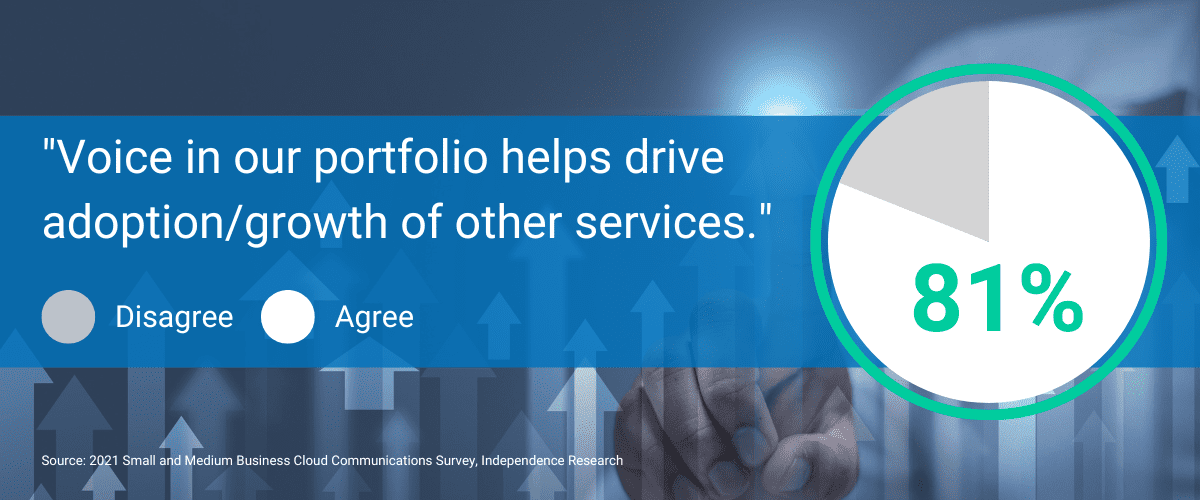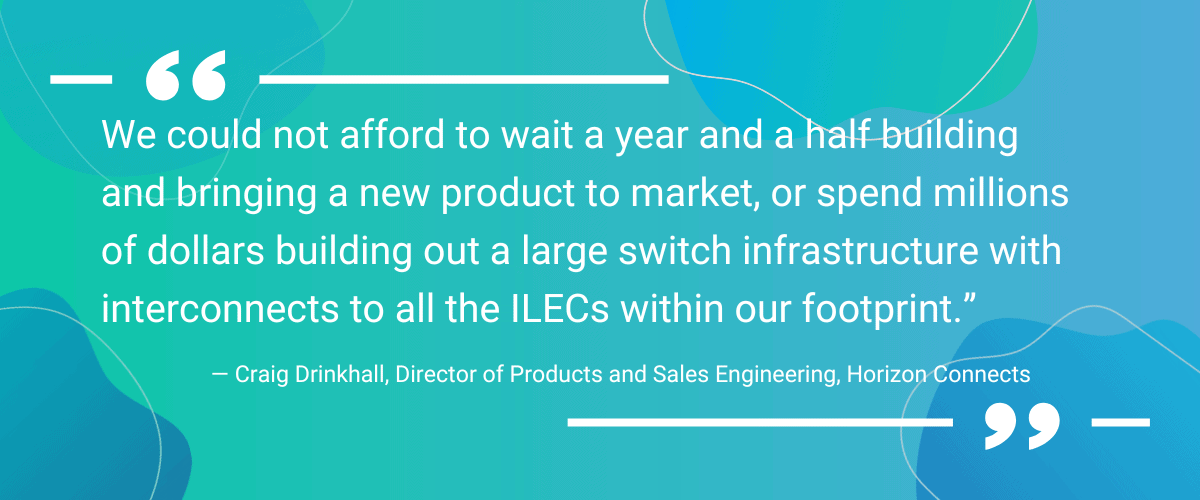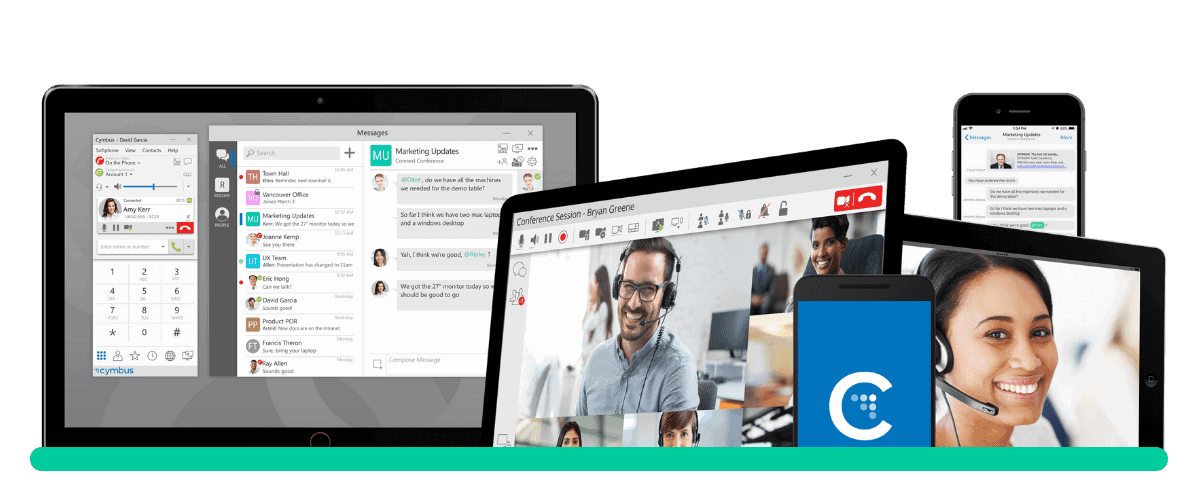For new internet service providers (ISPs) entering the market without a background in voice services, there’s great opportunity to grow revenue, accelerate return on investment (ROI), and deliver a better customer experience with a phone service portfolio by adding VoIP to FTTH. This includes rural electric cooperatives, municipal providers, and overbuilder ISPs that are building broadband networks for rural and underserved communities. If you’re not offering your own branded VoIP over fiber broadband infrastructure, you should be!
Top Drivers for Horizon’s Transformation with VoIP to FTTH
Horizon, an ISP delivering residential, SMB, and enterprise voice and broadband services, owned the switch infrastructure within their incumbent local exchange carrier (ILEC) and utilized a VoIP partner for connectivity outside their footprint. However, because their VoIP partner had basic customer features and were unable to service the entirety of Horizon’s footprint, Horizon was unable to service all customer segments.
Due to rising consumer demands for collaboration and communication solutions, Horizon was at a crossroads: They could either build their own solution or vet a partner alternative that would allow them to provide a VoIP to FTTH solution with coverage to their entire footprint, increase customer functionality, and expand growth and revenue opportunities.
Solutions & Challenges Prior to Adding VoIP to FTTH
With several infrastructure components already in place, including a softswitch, Horizon needed to make several largescale decisions, with time and cost being their top concerns. Horizon wanted to avoid a large upfront capital expenditure, which is typically required to expand footprint connectivity, and couldn’t afford to wait for the development of a replacement solution.
Craig Drinkhall, Director of Products and Sales Engineering of Horizon Connects, commented, “we could not afford to wait a year and a half building and bringing a new product to market or spend millions of dollars building out a large switch infrastructure with interconnects to all the ILECs within our footprint.”
Horizon required a VoIP to FTTH solution that would help them overcome the following challenges:
Insufficient Network Coverage
The VoIP partner didn’t cover Horizon’s current network and had no plans to expand, constraining Horizon’s ability meet their growth and revenue potential across their entire footprint.
Limited Features
The VoIP service had basic features that “didn’t have anything feature-wise close to what we needed.” In addition, without a softphone offering, Horizon had lost out on previous net-new opportunities.
Metaswitch Replacement
The Metaswitch softswitch in place in Horizon’s ILEC was used for trunking and was operational for 10 years. During that time, the ease of implementation and number of lines deployed was less successful than Horizon desired.
Horizon’s VoIP to FTTH Goals & Requirements
Neither alternative vendors nor building their own infrastructure addressed Horizon’s need to get fiber to the customer’s location and the subsequent work required on-premises.
Once fiber is in place, it can be highly lucrative for the telecom providers because they can layer hundreds or thousands of individual OTT voice and cloud-based solutions. However, the remaining stretch of network build required to reach a customer’s premises, or the “last mile,” can be a significant challenge for providers and strain precious internal resources.
Horizon needed a VoIP to FTTH solution and platform that would replace their Metaswitch, provide superior network coverage, and include “last mile” connectivity.
VoIP to FTTH Solution Components at a Glance
Despite initial hesitancy from Horizon’s telecom veterans and concerns about customer resistance transitioning away from Cisco hardphones, internal testing proved Alianza’s platform and team of experts was the clear choice.
Alianza’s SIP Trunking replaced Horizon’s Metaswitch softswitch, and Business Cloud Communications provided Horizon’s customers a feature-rich voice and unified communication (UC) VoIP to FTTH solution for business users with access features like auto-attendants, custom schedules, ring groups, voicemail-to-email, mobile applications, and more.
Here are the details:
SIP Trunking

Self-Maintained Solution
No in-house technical expertise or personnel are needed to maintain a SIP network, meaning happier customers with less effort

Right-Sized Flexibility
SIP Trunking resources are flexible; no physical installation or setup necessary.

Recurring Cost Savings
A single SIP trunk takes the place of the 3–4 traditional business lines and can support one to many hundreds of simultaneous calls, eliminating complicated monthly bills to unlock predicable customer billing and recurring savings for their entire system.
Business Cloud Communications
A robust and flexible cloud communications solution that was built with exceptional quality and always-on availability to allow service providers to innovate quickly and address the evolving demands of their end user customers in a way that is easy to manage, easy to consume, and highly profitable.

Feature-Rich
With 100+ features, it meets the needs of a wide variety of users, and ensures rate center coverage, local number portability, and full regulatory support, including emergency services and lawful intercept.

Self-Management
Users can customize their call features and manage their voice services in the online Voice Portal.

Instant ROI
No risk or upfront investment necessary, which increases speed to market and ROI. Cloud voice margins scale in-step with your customers’ needs.

Desktop and Mobile Apps
Horizon customers can now utilize smartphones, tablets, and PCs wherever they are, without moving to an all-IP system. “The softphone is very valuable. We use it a lot in customer demos.”
Top Benefits Horizon Saw Adding VoIP to FTTH
Using Aliana’s cloud communications platform, Horizon was able to increase the monetization of their assets which supported their primary mission to expand their network and deliver fiber connectivity to consumers.
When we spoke with Horizon, they named these as some of the top benefits of their digital transformation:
- Anywhere Communications. BCC enabled Horizon to extend advanced functionality and features to all customer segments, regardless of their locations.
- Reduced OPEX. Removed several layers including engineers, administration, support personnel, and software maintenance costs.
- Expedited Internal Rate of Return. “By going with Alianza we hardly had any fixed cost structure to have to account for in calculating our internal rate of return.”
- Speed to Market. From the time they signed, their Alianza solution was live in only four months, in the middle of the COVID-19 pandemic. Last-mile fiber builds can often take 6–8 months from closing a deal to installation, but now it only takes Horizon an average of 60 days.









